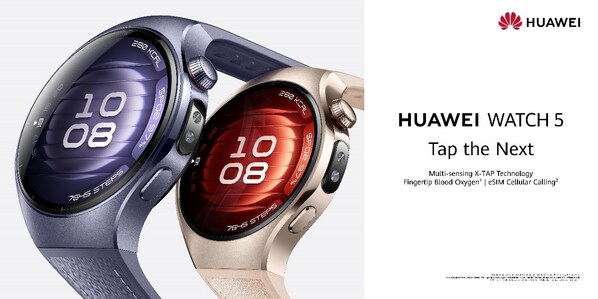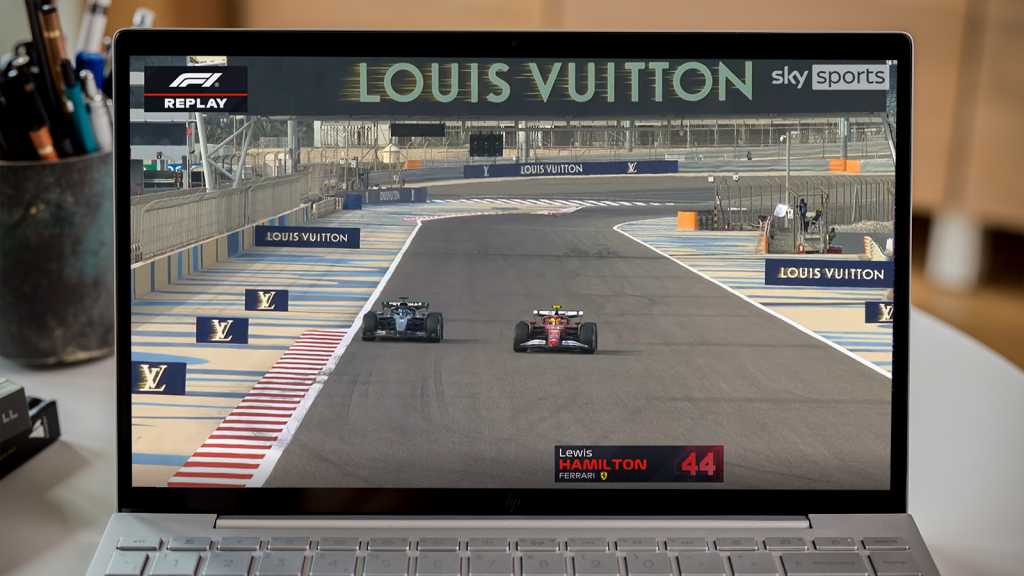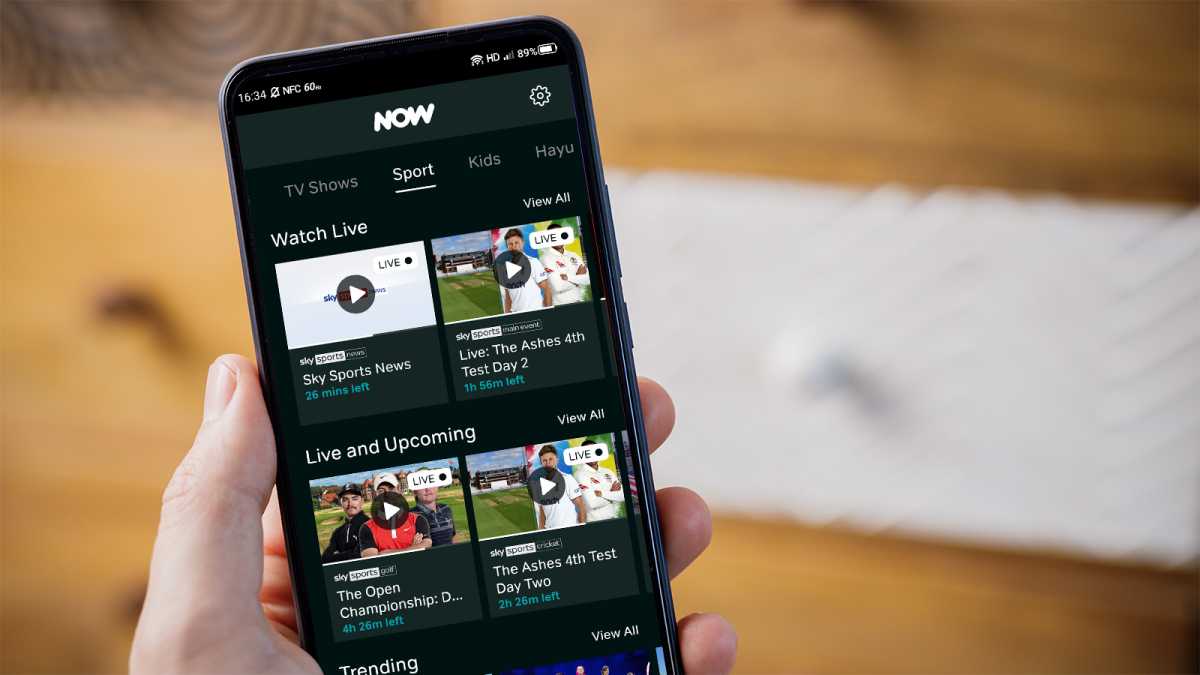Technology
Global Sports Medicine Market Set to Reach $11.3B by 2031, Driven by Innovation
Sports Medicine Market Global sports medicine market to hit $11.3B by 2031, driven by innovation, aging athletes, and rising injuries. Explore trends, regions, and key players. By 2031, the sports medicine market will hit $11.3B driven by tech, aging athletes, and a 6.3% CAGR redefining injury recovery, performance, and preventive care worldwide.” — DataM Intelligence […]


Sports Medicine Market
Global sports medicine market to hit $11.3B by 2031, driven by innovation, aging athletes, and rising injuries. Explore trends, regions, and key players.
— DataM Intelligence
AUSTIN, TX, UNITED STATES, May 30, 2025 /EINPresswire.com/ — The global sports medicine market reached US$ 7.0 billion in 2022 and is projected to witness lucrative growth, reaching approximately US$ 11.3 billion by 2031. Over the forecast period from 2024 to 2031, the market is expected to register a compound annual growth rate (CAGR) of 6.3%.
The sports medicine market is on a strong growth trajectory, propelled by rising global participation in sports, greater awareness of physical fitness, and continuous innovation in injury treatment and rehabilitation. This report offers a comprehensive view of the market’s current size, future growth potential, regional insights, major players, and notable developments particularly in the United States and Japan.
Download Exclusive Sample Report Here: https://datamintelligence.com/download-sample/sports-medicine-market
This expansion is fueled by a mix of factors such as:
The increasing rate of sports-related injuries.
Growing demand for minimally invasive surgical procedures.
Technological innovations in wearable and regenerative medicine.
A rising aging population engaged in fitness routines to maintain mobility and health.
Regional Outlook
North America
North America remains the leader in the sports medicine space. In 2024, the region accounted for nearly half of the global market revenue. The U.S., in particular, stands out due to its strong sports culture, highly developed healthcare infrastructure, and investments in R&D. The U.S. market alone is expected to grow from around USD 2.36 billion in 2024 to more than USD 5.29 billion by 2034, indicating strong demand and innovation across orthopaedic care, joint repair, and performance monitoring technologies.
Asia-Pacific
The Asia-Pacific region is expected to experience the most rapid growth in the coming decade. Countries like China, Japan, South Korea, and India are increasingly adopting advanced medical technologies and investing heavily in sports medicine training, research, and infrastructure. Growing health consciousness, expanding middle-class populations, and national sports initiatives are boosting the region’s appeal. By 2033, Asia-Pacific’s market value is expected to double, reaching around USD 3.44 billion.
Key Players in the Market
Arthrex Inc
CONMED Corporation
Johnson & Johnson
Medtronic PLC
Mueller Sports Medicine Inc
Performance Health
Smith & Nephew
Stryker Corporation
Wright Medical Group
Zimmer Biomet Holdings Inc
Innovations and Trends
The sports medicine industry is witnessing transformative changes thanks to rapid technological evolution. Some notable trends include:
Wearable Technology: Real-time monitoring of muscle strain, heart rate, hydration, and recovery is becoming standard for both professional and amateur athletes.
Regenerative Medicine: Stem cell therapy, platelet-rich plasma (PRP), and tissue engineering are opening new doors in sports injury recovery.
AI and Data Analytics: Algorithms are being used to customize training regimens, monitor rehabilitation progress, and prevent injuries before they occur.
Together, these innovations are shifting the focus of sports medicine from reactive care to proactive and preventive healthcare.
Latest News
Latest News in the USA
The United States continues to lead the sports medicine industry with major corporate and clinical advancements:
Smith & Nephew’s Robust Q1 Performance: The company reported a 3.2% year-over-year increase in orthopaedic sales, driven by improved performance in U.S. hip and knee implants, underscoring a rebound in elective procedures.
J&J MedTech’s Distribution Deal: In November 2024, Johnson & Johnson MedTech entered into a U.S.-exclusive distribution partnership with Responsive Arthroscopy Inc. This strategic move is set to strengthen its minimally invasive soft tissue repair offerings, especially for ACL and rotator cuff repairs.
Sword Health’s Expansion: This digital physical therapy platform continues to scale operations in the U.S., using AI-powered therapy programs for personalized recovery and injury prevention. Sword Health’s solutions are being adopted not only by athletes but also by corporate wellness programs.
Latest News in Japan
Japan is emerging as a hotspot for sports medicine innovation, partly driven by its preparation for global sporting events:
Tokyo to Host 2025 World Athletics Championships: Scheduled for September 13–21, 2025, this event is expected to elevate the demand for sports injury management and athletic rehabilitation services.
Summer Deaflympics 2025: Japan will host this prestigious event from November 15–26, 2025. With a focus on inclusivity, this will spotlight sports medicine solutions designed for athletes with disabilities, setting a precedent for accessible healthcare.
Bain Capital Acquires Tanabe Pharma: In a USD 3.3 billion deal, Bain Capital took over Tanabe Pharma from Mitsubishi Chemical Group. The acquisition is likely to result in faster drug development cycles, including potential breakthroughs in regenerative therapies used in sports medicine.
Market Segmentation:
By Product: Body Support and Recovery, Body Reconstruction and Repair, Body Monitoring and Evaluation Devices, Accessories.
By Application: Back & Spine Injuries, Ankle & Foot Injuries, Elbow & Wrist Injuries, Hip Injuries, Others.
By End User: Hospitals, Specialty Clinics, Others.
By Region: North America, Latin America, Europe, Asia Pacific, Middle East, and Africa.
Conclusion
The global sports medicine market is steadily evolving from a traditional injury treatment segment into a dynamic, high-tech ecosystem. With a solid CAGR of 6.3% expected from 2024 to 2031 and a projected market size of over USD 11.3 billion by the end of that period, the sector holds promising opportunities. The market is being reshaped by smart technologies, regenerative therapies, and growing health consciousness.
Whether in the advanced ecosystems of the U.S. or the rapidly modernizing healthcare framework of Japan, sports medicine is increasingly seen not just as a treatment avenue but as a vital component of holistic health and athletic performance. Stakeholders from healthcare providers to investors—should closely monitor these trends to seize future growth opportunities.
Stay informed with the latest industry insights-start your subscription now: https://www.datamintelligence.com/reports-subscription
Related Reports:
Powered Prosthetics Market
Foot and Ankle Devices Market
Sai Kumar
DataM Intelligence 4market Research LLP
+1 877-441-4866
email us here
Visit us on social media:
LinkedIn
X
Legal Disclaimer:
EIN Presswire provides this news content “as is” without warranty of any kind. We do not accept any responsibility or liability
for the accuracy, content, images, videos, licenses, completeness, legality, or reliability of the information contained in this
article. If you have any complaints or copyright issues related to this article, kindly contact the author above.
![]()
Technology
Mibro Unveils Three New Smartwatches, Highlighting Sports-Tech Innovation and Brand Transformation
SHENZHEN, China, June 16, 2025 /PRNewswire/ — On June 16, Mibro, a brand of ZhenShi Information Technology (Shenzhen) Co., Ltd, proudly announces the launch of three new smartwatches: GS Explorer S, GS Pro2, and GS Active2, marking a milestone in its brand evolution. With a renewed focus on integrating sports and technology, the release underscores the […]

SHENZHEN, China, June 16, 2025 /PRNewswire/ — On June 16, Mibro, a brand of ZhenShi Information Technology (Shenzhen) Co., Ltd, proudly announces the launch of three new smartwatches: GS Explorer S, GS Pro2, and GS Active2, marking a milestone in its brand evolution. With a renewed focus on integrating sports and technology, the release underscores the brand’s commitment to supporting athletes across various disciplines.

Mibro New GS Series
Each smartwatch in the lineup is designed to serve a unique athletic purpose. The Mibro GS Explorer S is engineered for extreme outdoor adventurers, ensuring durability in demanding environments. It supports freediving, sailing, surfing, mountaineering, and rock climbing, featuring military-grade durability, Bluetooth calling, a 100-meter water resistance rating and advanced health monitoring. A premium version boasts an aerospace-grade titanium alloy body. At MWC 2025, the GS Explorer S won the “Best in Show” award from Wareable, highlighting its exceptional performance and design.
The Mibro GS Pro2 targets triathlon participants, particularly those who engage in the sport regularly through amateur events. As the flagship model of the lineup, it combines rugged construction with a lightweight build. The smartwatch supports multi-sport tracking for swimming, cycling, and running, and includes trajectory navigation for enhanced route planning and performance analysis.
The running community will find its match in the lightweight design of the Mibro GS Active2, which weighs just 39.9 grams. Tailored specifically for runners, the smartwatch incorporates six core technologies, reshaping training experiences through various running modes and personalized training plans.
A notable innovation across the new GS Series lineup is the Padel mode. Using real athlete performance data and guidance from China’s top Padel professionals, the feature provides sport-specific metrics and professional-grade feedback tailored to players of all skill levels.
All three watches are powered by Galaxy OS 2.0, delivering a smoother and more intuitive user interface. The system allows seamless health and fitness data integration with third-party platforms, including Google Fit for Android users, Apple Health for iOS, and Strava for GPS-enabled devices, ensuring a connected and holistic user experience.
This launch marks Mibro’s evolution from a wearable brand to a sports tech partner. Backed by 300+ R&D engineers, 200+ patents, and an in-house sports science lab, the company is poised to drive the next generation of smart athletic performance tools.
For more information, please visit https://www.mibrofit.com/, or follow them on Facebook and Instagram.
For business inquiries, please contact [email protected].
Video – https://mma.prnewswire.com/media/2711231/GS_Series_HD_EN.mp4

Technology
Apple WatchOS 26 Fitness Features: Everything You Need to Know
Apple WatchOS 26 brings a host of enhancements designed to refine your smartwatch experience. With a strong emphasis on health tracking, usability, and seamless integration, this update introduces practical improvements that cater to a wide range of users. Whether you’re a fitness enthusiast, a professional seeking efficiency, or someone who values accessibility, WatchOS 26 delivers […]

Apple WatchOS 26 brings a host of enhancements designed to refine your smartwatch experience. With a strong emphasis on health tracking, usability, and seamless integration, this update introduces practical improvements that cater to a wide range of users. Whether you’re a fitness enthusiast, a professional seeking efficiency, or someone who values accessibility, WatchOS 26 delivers tools and features tailored to your lifestyle. The video below fromDC Rainmaker gives us a look at all of the new fitness features in watchOS 26.
What’s New in the User Interface?
The user interface in WatchOS 26 has been redesigned to make navigation more intuitive and efficient. Key updates include:
- A streamlined layout that simplifies access to essential functions, reducing the time spent navigating menus.
- Enhanced gesture controls and a more responsive digital crown, making sure smoother interactions and greater precision.
- New widgets that provide at-a-glance information, allowing you to quickly check updates without opening apps.
These changes are aimed at improving usability, helping you save time and focus on what matters most during your day.
Enhanced Health and Fitness Tracking
Health and fitness tracking remain central to the Apple Watch experience, and WatchOS 26 introduces several advancements to keep you informed and motivated. New features include:
- Detailed heart rate analysis, offering insights into trends and irregularities for better cardiovascular monitoring.
- Advanced sleep tracking that provides actionable insights into your sleep quality and patterns.
- Stress management tools, including real-time stress level monitoring and guided breathing exercises to promote relaxation.
- Hydration reminders, encouraging you to maintain optimal water intake throughout the day.
- Expanded support for interval training and outdoor activities, catering to a variety of fitness routines and goals.
These updates ensure that your Apple Watch remains a reliable companion for maintaining and improving your overall health and wellness.
Performance Upgrades for Speed and Efficiency
WatchOS 26 introduces significant performance improvements, making your Apple Watch faster and more efficient. Key highlights include:
- Faster app launches and smoother transitions between screens, reducing delays during use.
- Optimized battery performance, allowing for all-day usage without frequent recharging.
These upgrades enhance the reliability of your device, making sure it performs seamlessly whether you’re managing daily tasks or engaging in more demanding activities.
App Functionality: Built-In and Third-Party Enhancements
WatchOS 26 enhances both native and third-party app functionality, making the Apple Watch even more versatile. Notable updates include:
- Expanded capabilities for built-in apps such as Messages, Calendar, and Weather, offering more features and improved usability.
- New developer tools that enable the creation of richer, more interactive apps, enhancing the overall app ecosystem.
- Deeper integration with the watch’s sensors, providing real-time feedback during workouts and other activities.
These improvements ensure that your Apple Watch remains a powerful tool for productivity, communication, and entertainment.
More Customization Options
Personalization is a key focus in WatchOS 26, offering new ways to make your Apple Watch uniquely yours. Updates include:
- New watch face designs, ranging from minimalist styles for simplicity to data-rich layouts for users who want detailed information at a glance.
- Customizable complications, allowing you to display the most relevant information, such as fitness stats, calendar events, or weather updates.
These options empower you to tailor your watch to suit your preferences and lifestyle, making sure it reflects your individuality.
Deeper Integration with the Apple Ecosystem
WatchOS 26 strengthens the Apple Watch’s role as a central hub within the Apple ecosystem. Key integration features include:
- Handoff functionality, allowing seamless transitions between your Apple Watch, iPhone, and Mac for tasks like messaging or browsing.
- Enhanced compatibility with AirPods, allowing for smoother audio transitions, and HomeKit devices, simplifying control of your smart home.
This deeper integration enhances convenience, making it easier to manage your digital life across multiple devices.
Accessibility: Technology for Everyone
Apple continues to prioritize inclusivity with new accessibility features in WatchOS 26. These updates are designed to ensure the Apple Watch serves a diverse range of users. Key features include:
- AssistiveTouch, which allows users with limited mobility to control their watch through gestures, eliminating the need for physical touch.
- Refined voice commands, offering greater accuracy and ease of use for hands-free interactions.
- Improved support for hearing aids and screen readers, making sure the device is accessible to individuals with hearing or visual impairments.
These enhancements reflect Apple’s commitment to creating technology that is inclusive and adaptable to various needs.
A Comprehensive Update for a Smarter Apple Watch
WatchOS 26 builds upon the strengths of its predecessors, delivering meaningful improvements across usability, health tracking, and integration. With faster performance, enhanced customization options, and new accessibility tools, this update ensures the Apple Watch remains a leader in wearable technology. Whether you’re focused on fitness, productivity, or personalization, WatchOS 26 offers practical tools to enhance your daily life and keep you connected in smarter, more efficient ways.
Advance your skills in Apple WatchOS 26 by reading more of our detailed content.
Source & Image Credit: DC Rainmaker
Filed Under: Apple, Gadgets News, Technology News, Top News
Latest Geeky Gadgets Deals
Disclosure: Some of our articles include affiliate links. If you buy something through one of these links, Geeky Gadgets may earn an affiliate commission. Learn about our Disclosure Policy.
Technology
New AI-Powered Fitness App TrueFits Tackles Gym Wastage, Brings Workouts to Your Phone
PNN Advertisement Bengaluru (Karnataka) [India], June 16: We live in a world where more than 70% of gym memberships go unused. This is happening because people can’t commit to gyms due to busy and rigid schedules. Due to this, Fitness often feels more like a financial burden than a healthy lifestyle. Rigid schedules, intimidating equipment, […]

PNN

Bengaluru (Karnataka) [India], June 16: We live in a world where more than 70% of gym memberships go unused. This is happening because people can’t commit to gyms due to busy and rigid schedules. Due to this, Fitness often feels more like a financial burden than a healthy lifestyle. Rigid schedules, intimidating equipment, and long-term contracts have made traditional gyms difficult to stick to. It is especially difficult for beginners, busy professionals, and those in Tier 2-3 cities.
There is a growing disconnect between gym infrastructure and user convenience. With the rapid advancement of AI, the need for smart fitness solutions has become more urgent than ever. India’s underused gym economy demands an innovative approach. Any approach that can make fitness more accessible and flexible. In today’s busy and fast-paced world, committing to a traditional gym routine is very much difficult.
We need a solution that allows people to stay fit without being tied to expensive monthly or annual commitments. TrueFits is an AI-powered fitness platform. It is working to bridge this gap. It aims to provide users with personalized workouts, expert-designed fitness plans, and even access to gym sessions — all without the pressure of long-term memberships.
Why should fitness be locked inside four walls or rigid packages? TrueFits is a platform that is built to fit your life — not the other way around.
One of the biggest issue with traditional gyms is the burden of monthly or annual commitments. Many busy users prefer a solution that allows them to pay only when they use the gym. People, these days, don’t want to be locked into long-term plans. They want to pay only when they actually attend a gym or use a service.
TrueFits addresses this problem with its “pay-as-you-use” model. It allows users to pay only when they visit a partner gym or access advanced features. This eliminates the guilt and waste of unused memberships. On the other hand, gyms also benefit by filling slow hours and reaching new customers digitally with this technology.
Backed by over 105 fitness experts, TrueFits uses AI to analyze user body type, health goals, and workout history. It then delivers a customized workout plan directly on the user’s phone, laptop, or smart TV. They have over 135+ training modules. Users can start exercising anywhere, anytime without need of a personal trainer or gym commitment required.
The platform currently supports over 100,000 daily active users. It shares regular updates to ensure that users always have access to fresh and adaptive content. It also helps trainers find jobs and enables small gyms to boost footfall — especially in semi-urban and rural regions.
Based in Bangalore, TrueFits is not just creating a product but building a new fitness economy–one that’s more democratic, accessible, and driven by real human needs. The company is also developing special programs for people with medical conditions, senior citizens, and differently abled users.
In future updates, company plans to integrate smartwatches and health bands. It will enable real-time tracking and adaptive coaching. The team is preparing to expand across India and into select international markets. TrueFits also aims to grow from 1 lakh to over 5 lakh daily users in the next few years.
About TrueFits
TrueFits is an AI-powered fitness platform developed by First Move Software Pvt. Ltd., headquartered in Bangalore. With a flexible model that prioritizes user convenience and affordability, TrueFits is transforming fitness for modern India–bringing workouts to fingertips and redefining how gyms engage with users.
Learn more at: https://truefits.app/
(ADVERTORIAL DISCLAIMER: The above press release has been provided by PNN. ANI will not be responsible in any way for the content of the same)
(The story has come from a syndicated feed and has not been edited by the Tribune Staff.)
Technology
Small businesses are an innovation powerhouse. For…
The federal government wants to boost Australia’s productivity levels – as a matter of national priority. It’s impossible to have that conversation without also talking about innovation. We can be proud of (and perhaps a little surprised by) some of the Australian innovations that have changed the world – such as the refrigerator, the electric […]

The federal government wants to boost Australia’s productivity levels – as a matter of national priority. It’s impossible to have that conversation without also talking about innovation.
We can be proud of (and perhaps a little surprised by) some of the Australian innovations that have changed the world – such as the refrigerator, the electric drill, and more recently, the CPAP machine and the technology underpinning Google Maps.
Australia is continuing to drive advancements in machine learning, cybersecurity and green technologies. Innovation isn’t confined to the headquarters of big tech companies and university laboratories.
Small and medium enterprises – those with fewer than 200 employees – are a powerhouse of economic growth in Australia. Collectively, they contribute 56% of Australia’s gross domestic product (GDP) and employ 67% of the workforce.
Our own Reserve Bank has recognised they also have a huge role to play in driving innovation. However, they still face many barriers to accessing funding and investment, which can hamper their ability to do so.
Finding the funds to grow
We all know the saying “it takes money to make money”. Those starting or scaling a business have to invest in the present to generate cash in the future. This could involve buying equipment, renting space, or even investing in needed skills and knowledge.
A small, brand new startup might initially rely on debt (such as personal loans or credit cards) and investments from family and friends (sometimes called “love money”).
Having exhausted these sources, it may still need more funds to grow. Bank loans for businesses are common, quick and easy. But these require regular interest payments, which could slow growth.
Selling stakes
Alternatively, a business may want to look for investors to take out ownership stakes.
This investment can take the form of “private equity”, where ownership stakes are sold through private arrangement to investors. These can range from individual “angel investors” through to huge venture capital and private equity firms managing billions in investments.
It can also take the form of “public equity”, where shares are offered and are then able to be bought and sold by anyone on a public stock exchange such as the Australian Securities Exchange (ASX).
Unfortunately, small and medium-sized companies face hurdles to accessing both kinds.

Kvalifik/Unsplash
Private investors’ high bar to clear
Research examining the gap in small-scale private equity has found 46% of small and medium-sized firms in Australia would welcome an equity investment – despite saying they were able to acquire debt elsewhere.
They preferred private equity because they also wanted to learn from experienced investors who could help them grow their companies. However, very few small and medium-sized enterprises were able to meet private equity’s investment criteria.
When interviewed, many chief executives and chairs of small private equity firms said their lack of interest in small and medium-sized enterprises came down to cost and difficulty of verifying information about the health and prospects of a business.
To make it easier for investors to compare investments, all public companies are required to disclose their financial information using International Financial Reporting Standards.
In contrast, small private companies can use a simplified set of rules and do not have to share their statements of profit and loss with the general public.
Share markets are costly and complex
Is it possible to list on a stock exchange instead? An initial public offering (IPO) would enable the company to raise funds by selling shares to the public.
Unfortunately, the process of issuing shares on a stock exchange is time-consuming and costly. It requires a team of advisors (accountants, lawyers, and bankers) and filing fees are high.
There are also ongoing costs and obligations associated with being a publicly traded company, including detailed financial reporting.
Last week, the regulator, the Australian Securities and Investments Commission (ASIC), announced new measures to encourage more listings by streamlining the IPO process.
Despite this, many small companies do not meet the listing requirements for the ASX.
These include meeting a profits and assets test and having at least 300 investors (not including family) each with A$2,000.
There is one less well-known alternative – the smaller National Stock Exchange of Australia (NSX), which focuses on early-stage companies. Ideally, this should have been a great alternative for small companies, but it has had limited success. The NSX is now set to be acquired by a Canadian market operator.
Making companies more attractive
Our previous research has highlighted that small and medium-sized businesses should try to make themselves more attractive to private equity companies. This could include improving their financial reporting and using a reputable major auditor.
At their end, private equity companies should cast a wider net and invest a little more time in screening and selecting high-quality smaller companies. That could pay off – if it means they avoid missing out on “the next Google Maps”.

Susan Quin & The Bigger Picture, CC BY
What about the $4 trillion of superannuation?
There are other opportunities we could explore. Australia’s pool of superannuation funds, for example, have begun growing so large they are running out of places to invest.
That’s led to some radical proposals. Ben Thompson, chief executive of Employment Hero, last year proposed big superannuation funds be forced to invest 1% of their cash into start-ups.
Less extreme, regulators could reassess disclosure guidelines for financial providers which may lead funds to prefer more established investments with proven track records.
There is an ongoing debate about whether the Australian Prudential Regulation Authority (APRA), which regulates banks and superannuation, is too cautious. Some believe APRA’s focus on risk management hurts innovation and may result in super funds avoiding startups (which generally have a higher likelihood of failure).
In response, APRA has pointed out the global financial crisis reminded us to be cautious, to ensure financial stability and protect consumers.
This article is part of The Conversation’s series, The Productivity Puzzle.
The author would like to acknowledge her former doctoral student, the late Dr Bruce Dwyer, who made significant contributions to research discussed in this article. Bruce passed away in a tragic accident earlier this year.
![]()
Colette Southam does not work for, consult, own shares in or receive funding from any company or organisation that would benefit from this article, and has disclosed no relevant affiliations beyond their academic appointment.
This article was originally published on The Conversation. Read the original article.
Technology
IDC Report: Huawei Ranks No.1 in Global Wrist-Worn Market in Q1
H u awei wearable devices Surpassed 200 Million Cumulative Shipments SHENZHEN, China, June 14, 2025 /PRNewswire/ — According to the latest IDC Worldwide Quarterly Wearable Device Tracker data, Huawei ascended to the top position in the global wrist-worn device market in Q1 2025, while maintaining robust growth momentum and retaining its leadership in shipment volume within China. […]

H u awei wearable devices Surpassed 200 Million Cumulative Shipments
SHENZHEN, China, June 14, 2025 /PRNewswire/ — According to the latest IDC Worldwide Quarterly Wearable Device Tracker data, Huawei ascended to the top position in the global wrist-worn device market in Q1 2025, while maintaining robust growth momentum and retaining its leadership in shipment volume within China. Additionally, as of 5 June 2025, Huawei’s cumulative global wearable shipments have exceeded 200 million units.
Five Product Series Catering to Global Users’ Diverse Scenario Needs
Huawei wearables integrate fashionable design, professional and comprehensive sports and health features, and efficient, practical smart experiences. Tailored to different user needs, Huawei has developed five product series to fulfil the diverse scenario requirements of all user groups—spanning smart living, scientific exercise, and health management.
The HUAWEI WATCH Series incorporates cutting-edge smart technology, featuring standalone calling capabilities and smart vehicle control functions to enable an efficient, intelligent lifestyle. The newly launched HUAWEI WATCH 5 delivers enhanced intelligence, efficiency and convenience. Equipped with the innovative multi-sensing X-TAP technology, it unlocks new dimensions in health monitoring and tactile interaction. The HUAWEI WATCH FIT Series fulfils lightweight wear needs through its slim design and extensive sports functions, allowing users to fully enjoy daily life. Meanwhile, the HUAWEI WATCH GT Series combines exceptional battery life with fashionable aesthetics and professional sports health features, serving as a comprehensive wrist-worn fitness coach.


For users who push boundaries and challenge extremes, the HUAWEI WATCH Ultimate Series delivers ultimate reliability with its rugged construction, advanced sports modes including 100-metre professional diving and outdoor expedition features, as well as advanced golf course mode, to bring cater to users’ needs.
Additionally, addressing hypertension management challenges, Huawei innovatively broke through wrist-based blood pressure technology to launch the HUAWEI WATCH D Series. Through its breakthrough 24-hour dynamic blood pressure monitoring function, it helps users measure and manage blood pressure anytime, anywhere, integrating professional-grade blood pressure health guardianship into daily life.
Technological Innovation Driving Breakthroughs in Sports Health Technology
Behind the satisfaction of users’ sports health management needs lies Huawei wearables’ continuous innovation investment. Huawei has established three Health Labs globally, leveraging capabilities from over ten Huawei research institutes to relentlessly explore the frontiers of sports health technology.
In 2024, Huawei launched its new digital health & fitness paradigm—TruSense System—achieving higher accuracy and speed in vital sign data monitoring. In 2025, the TruSense System was upgraded again, fusing the advantages of fingertip and wrist detection to deliver a fuller, more accurate, and faster health monitoring experience, including 10-second fingertip blood oxygen readings and an increase in micro-body measurement indicators to 17 items.
In the field of blood pressure management, Huawei pioneered the launch of the HUAWEI WATCH D, a wrist-based blood pressure monitor that obtained Class II medical device registration certification in China. Now this innovation included in the “Chinese Guidelines for the Prevention and Treatment of Hypertension (2024 revision)”.
As of now, Huawei wearable devices have obtained 7 domestic medical certifications and medical device certificates in 13 overseas countries/regions, with nearly 1000 patent applications in the smart wearables field.
Huawei has collaborated with over 160 global professional institutions, conducted 300+ health research projects, and attracted over 17 million users to participate in health studies.
Active Rings: Where Huawei and Users Unite to build Sports Health Lifestyles
Huawei accompanies global users to build sports health lifestyles together. In September 2023, Huawei initiated the “Light Up Your Rings” campaign, which has seen over 6 million global users participate, lighting up rings over 300 million times. In 2025, the fully upgraded “Active Rings” initiative was introduced, inspiring global users to move joyfully anytime, anywhere with Huawei wearables.
The Active Rings campaign has already been held in Germany, Spain, and China, and beyond, where consumers jointly enjoyed active moments. It will progressively launch in APAC, Latin America, the Middle East, and other regions in the future.
Photo – https://mma.prnasia.com/media2/2708541/HUAWEI_WATCH_5.jpg?p=medium600
Photo – https://mma.prnasia.com/media2/2708543/1.jpg?p=medium600
Technology
How to Watch F1 Live UK: Canada Start Time, TV Channel & Schedule
The 2025 F1 season is well underway, and the Formula One circus heads to Canada for round 10. McLaren’s Oscar Piastri sits at the top of the standings, but he’s only ten points clear of teammate Lando Norris. After a late penalty in Spain, Max Verstappen is almost 50 points off the pace, but you […]

The 2025 F1 season is well underway, and the Formula One circus heads to Canada for round 10.
McLaren’s Oscar Piastri sits at the top of the standings, but he’s only ten points clear of teammate Lando Norris.
After a late penalty in Spain, Max Verstappen is almost 50 points off the pace, but you can’t rule out the reigning world champion at this stage. It looks like a three-way fight for the Drivers’ title, with Verstappen’s teammate Yuki Tsunoda and both Mercedes and Ferrari drivers off the pace.
What will happen at this weekend’s 10th race of the season? Here’s everything you need to know about the Canadian Grand Prix, including how to watch live from wherever you are, start time, TV channel, schedule and more.
PROMOTION
Use this special VPN birthday deal
Enjoy our Birthday deal: Get the 2-year Surfshark VPN plan for just $1.99/month with 3 months extra. Find the best deals online with a VPN that keeps your shopping spree safe and private! Block trackers, encrypt your data, and enjoy ad-free shopping.
What time is the F1 Canadian Grand Prix?
The F1 season continues at the Circuit Gilles Villeneuve in Montreal, Canada, this weekend. Here’s when the race will start:
- Sunday 15 June, 7pm BST (UK time), 2pm EDT, 11am PDT
How to watch the F1 Canadian Grand Prix live in the UK
Sky Sports has the full rights to F1 in the UK. It will show every practice, qualifying, sprint and race session of all 24 Grands Prix in the 2025 season.
To access Sky Sports, you have a few options. The first is by adding it to a regular Sky TV package, which offers offline access via a Sky Q box. This costs a total of £51 per month with £20 upfront on a 24-month contract.
If you don’t mind streaming, you might prefer to pair it with a Sky Stream dongle. You can get Sky TV, Netflix and Sky Sports for £35 per month on a 24-month contract.
Need a new TV? Sky Glass has Sky built-in, though it still relies on the internet for TV. However, it costs at least £14 per month with £20 upfront for 48 months, plus Sky Sports and Sky TV for an additional £35 per month.
If you don’t want to buy any new Sky hardware, it’s easier to stream via Now. This currently costs £26 per month, provided you’re happy to commit for 6 months. After that, it’s £34.99 per month.

Dominik Tomaszewski / Foundry
However, it’s worth noting that the standard plan limits you to 720p resolution and streaming on only one device at a time. To get 1080p and two devices, it’s an extra £6 per month for Now Boost, while three devices and 4K require £9 per month for Ultra Boost.
How to watch F1 for free in the UK
In the UK, the only way to watch F1 for free is on Channel 4, though this requires a TV licence if you plan on watching live.
Even then, that only applies to the British Grand Prix in 2025, with just highlights of the other races shown.

Sky
How to use a VPN to watch the F1 Spanish Grand Prix
If you’re not in the same country as the TV broadcaster, you won’t be able to watch F1 online without a VPN.
Officially, Sky doesn’t allow you to watch using a UK subscription while outside the country.
However, there is another way – using a virtual private network, or VPN. A VPN makes it appear that you’re located in the same country as the broadcaster when you connect to a server in the appropriate country.
If you’re already paying, it’s worth trying to access the local site or app. We’re using NordVPN for this tutorial, but Surfshark is a popular alternative. See the full range of options in our guide to the best VPN services.
Download the relevant VPN app

Anyron Copeman / Foundry
Head to the download page for the VPN you’d like to install and click ‘Download App’. The likes of NordVPN are available on a range of devices.
Connect to a UK server

Sam Singleton
Open the app and sign in to your account if necessary. Then, select any US or UK server and connect to it.
Depending on the service you’re using, it might look quite different to the above. But this should be relatively easy to find.
Start watching as usual

Anyron Copeman / Foundry
Head to the website or app you’d usually use to start watching, then sign in if you haven’t already.
You should now be able to stream content as normal and without any restrictions.
If it’s not working and you’re watching from a phone using Wi-Fi, try turning on Airplane Mode and then enabling only Wi-Fi.
-

 College Sports2 weeks ago
College Sports2 weeks agoIU basketball recruiting
-

 Health2 weeks ago
Health2 weeks agoOregon track star wages legal battle against trans athlete policy after medal ceremony protest
-

 Professional Sports2 weeks ago
Professional Sports2 weeks ago'I asked Anderson privately'… UFC legend retells secret sparring session between Jon Jones …
-

 Professional Sports2 weeks ago
Professional Sports2 weeks agoUFC 316 star storms out of Media Day when asked about bitter feud with Rampage Jackson
-

 Rec Sports3 weeks ago
Rec Sports3 weeks agoScott Barker named to lead CCS basketball • SSentinel.com
-

 Rec Sports3 weeks ago
Rec Sports3 weeks agoJ.W. Craft: Investing in Community Through Sports
-

 Motorsports3 weeks ago
Motorsports3 weeks agoNASCAR Penalty Report: Charlotte Motor Speedway (May 2025)
-

 College Sports3 weeks ago
College Sports3 weeks agoOlympic gymnastics champion Mary Lou Retton facing DUI charge
-

 Motorsports3 weeks ago
Motorsports3 weeks agoRockingham Speedway listed for sale after NASCAR return
-

 Rec Sports2 weeks ago
Rec Sports2 weeks ago2x NBA All-Star Reacts to Viral LeBron James Statement






 Caitlin Clark
Caitlin Clark






















